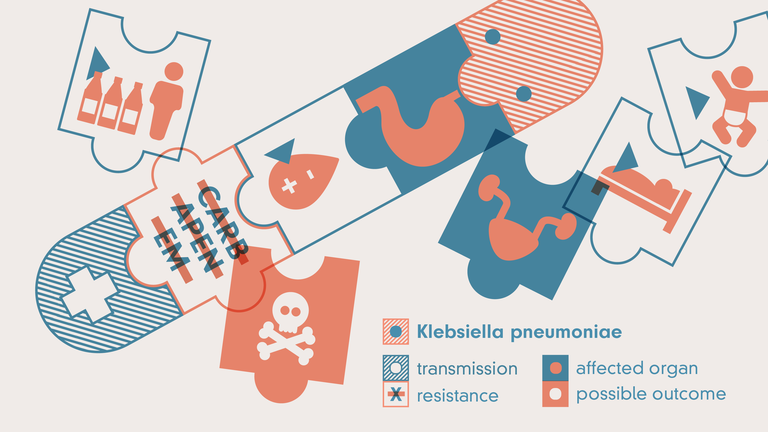Klebsiella pneumoniae – Carbapenems
The WHO warns of Klebsiella pneumoniae bacteria resistant to carbapenem-antibiotics. Here you can see their prevalence in Europe’s hospitals. The percentage indicates the ratio of Klebsiella pneumoniae found to be resistant to this particular antibiotic.
The bug
Klebsiella pneumoniae normally lives in the gut of humans and animals without causing any harm. This bacterium was also named after a German scientist – the bacteriologist Edwin Klebs. In the nineteenth century it was already known that the germ can cause pneumonia. It can infect the urinary tract as well. It can be especially dangerous when it infects weakened patients in hospitals, like preemies, diabetics, alcoholics and people in intensive care. Among these, it can cause quickly developing outbreaks.
The resistance
Cephalosporins work on many different bacteria by inhibiting their reproduction. The first substance of this class was discovered in 1945 in mold. Cephalosporins have been chemically improved over time, so that they can also combat resistance. They are classified into generations. Third-generation cephalosporins are modern substances with a high relevance for battling hospital infections. Resistance is mainly caused by cell machines that degrade antibiotics.

Klebsiella pneumoniae is especially dangerous in hospitals, where it infects the urinary tracts and intestines of infants and weakened patients like alcoholics, diabetics, and intensive care recipients.
Text: Hristio Boytchev
Illustration: Nick Böse
Graphics: Simon Wörpel
Copy Editing: Christine Coester
